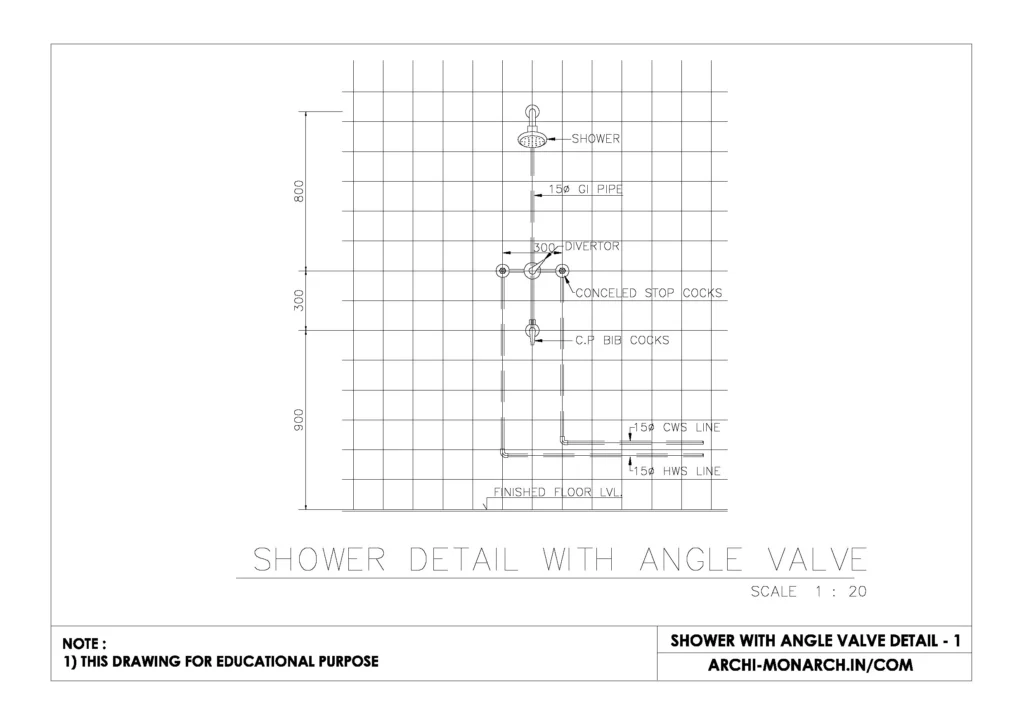In architecture and interior design, a shower with an angle valve offers enhanced control over water flow and temperature while contributing to a sleek, functional bathroom layout. An angle valve is a compact, manually operated valve installed at a 90-degree angle, typically positioned where the water supply meets the fixture.
In showers, it acts as a secondary control point, allowing easy maintenance or repairs without shutting off the entire water supply. This setup is particularly advantageous in modern bathrooms, where concealed plumbing and minimalist aesthetics are desired.
Angle valves also improve safety and efficiency by providing quick access to water control, reducing the risk of leaks or pressure imbalances. Their versatility makes them suitable for various shower designs, from simple hand showers to elaborate multi-jet systems, enhancing both practicality and elegance in bathroom architecture.
If you want to know about the submission drawing or miscellaneous detail or interior detail, please click the link.
Image of Shower with angle valve detail and downloadable (in DWG) link below

Shower with angle valve detail drawing – 1
A shower with an angle valve in construction involves several key components arranged in a logical sequence to ensure proper water flow and ease of maintenance. Here’s a detailed description of the setup:
Water Supply Line:
- Cold and hot water supply pipes (usually PPR, CPVC, or copper) run through the wall, delivering water to the shower area.
- Pipes are typically placed at a height of about 750–900 mm (30–36 inches) from the floor for easy access to the valve.
Angle Valve Placement:
- An angle valve is installed where the supply pipe meets the fixture inlet.
- The valve body sits flush with the wall, with only the control handle and outlet exposed.
- Positioned at a 90-degree angle, it allows the water supply to change direction — from horizontal (inlet) to vertical (outlet) or vice versa.
Connection to Fixtures:
- The outlet side of the angle valve connects to the showerhead supply pipe or diverter valve.
- For hand showers, a flexible hose attaches to the valve outlet.
Control and Access:
- The valve handle is easily accessible, usually aligned with other controls like the main shower mixer or diverter.
- The handle operates the internal mechanism, allowing you to shut off or regulate water flow.
Finishing:
- The wall opening around the valve is sealed with a decorative escutcheon plate or cover for a clean finish.
- Waterproofing measures, such as applying sealant around the valve base, prevent moisture intrusion.
Optional Features:
- In some designs, multiple angle valves control separate water outlets, like an overhead rain shower and a handheld shower.
This arrangement ensures easy maintenance, as you can isolate water to the shower without affecting other fixtures.
Our tips to help you improve your architectural Shower with angle valve detailing.
